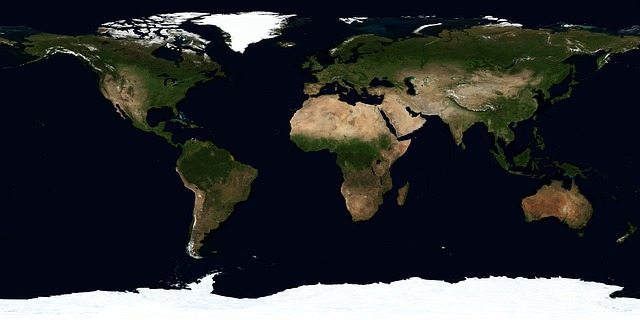How many continents are there students? Seven, named, Asia, Australia, Antarctica, Africa, Europe, North America and South America! This is what we have learned in our schools, right? Ever wondered how all these concepts came into existence? Normally people believe that our present earth and the population distribution on earth are all related to extinction of dinosaurs, which is partly true but we need to know the actual and other factors. Let us encounter some of the theories giving rise to the distribution of animals.
CLIMATE AND EVOLUTION THEORY
This theory was given by W.D. MATTHEW in 1939. He was a geologist and mammalian paleontologist who believed in the PERMANENCY OF CONTINENTS AND OCEAN BASINS. However he also believed that climate of the world changed throughout the history of evolution:

DURING WARMER AND HUMID PERIODS, shallow seas separated the continents and even the great land masses of Northern continents were habitable where animals could freely migrate and evolve.
DURING COOLER CLIMATES OF ICE AGES, the northern land masses as mentioned above, became inhospitable and thereby forcing animals to migrate to the southern continents.
THEORY OF CENTRIFUGAL SPECIATION

This theory was proposed by BROWN stating that largest populations of species exist in the most favourable areas. Further relating it to Population Pressure which according to him is build up by the increasing numbers in favourable areas which further force some pioneers to move into the peripheral areas which may be not as favourable as before. This further lead to Isolation and Speciation that will proceed from centre to periphery due to the centrifugal force generated by the population pressure of the species. And such migrations lead to differentiation of races, clines or subspecies by way of character displacement across the range of distribution.
AGE AND AREA THEORY

This theory was given by J.C. WILLIS in 1949, based on his studies on plant geography. According to him plants have a tendency to enlarge their range of distribution slowly in all directions and hence the age of a species must be proportional to the area occupied. This means that widely distributed species are older and the endemic species must be young. The species get subdivided into races and subspecies by isolations, mutations and other generic changes.
However this theory was objected by FERNALD stating that many plant species have spread rapidly while others slowly or have not extended their range. Also endemism is not always due to younger age of the species but also due to the extinction of the species from all areas except small habitable localities left surrounded by barriers.
Till now we looked upon how there might have been distribution of the species but what about the geographical separation of continents? For this, again a theory was put forward which was accepted worldwide. Even the scientists today cannot bring any other evidence regarding the same.
CONTINENTAL DRIFT THEORY

ALFRED WEGENER in 1915 proposed that “today’s continents were once a part of single land mass called PANGAEA, which slowly split apart.” Three major line of evidence supported this hypothesis:
- FOSSIL DISTRIBUTION: discovery of very similar fossils in rock masses separated by vast distances and by ocean expanses.
- COASTLINE MATCHING: similarity of coastlines for different continents suggests that they may once have been connected. But the fact that they were separated by sometimes thousands of miles suggested continental drift.
- PALEOMAGNETISM: studies of the magnetic field orientations in rock strata reinforced the case for plate tectonic.

According to this theory :
- The supercontinent PANGAEA existed as an irregular land mass on one side of the earth surrounded by the universal ocean-the PANTHALASSA.
- PANGAEA began to break up about 225-200 million years ago, eventually fragmenting into continents as we know today.
- The first fragmentation resulted into two subcontinents- NORTHERN LAURASIA and SOUTHERN GONDWANALAND.
- Gondwanaland split into WEST GONDWANALAND (South America and Africa), leaving behind Antarctica, Australia and India together.
- Shortly thereafter, India split off and drifted northward.
- During the next 70-65 million years South America separated away from Africa.
- During later stage, North America, Greenland and Eurasia drifted apart.
- Australia, New Zealand and Antarctica separated.
- India completed its journey to the north and collided with Eurasia, North and South America touched together at the ISTHMUS OF PANAMA.
